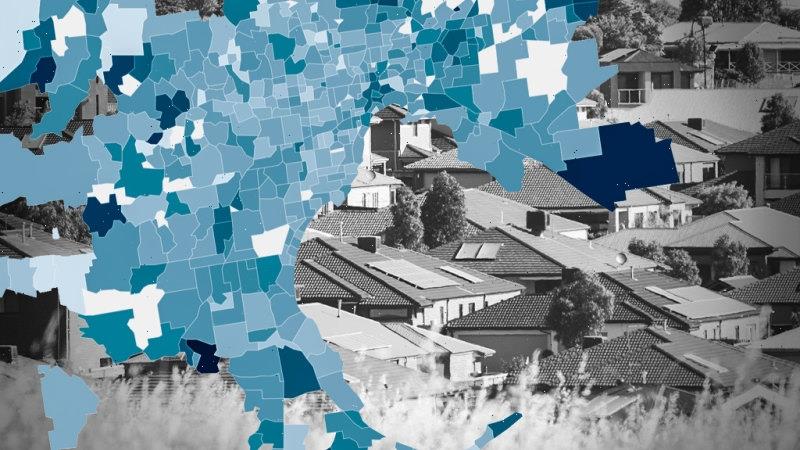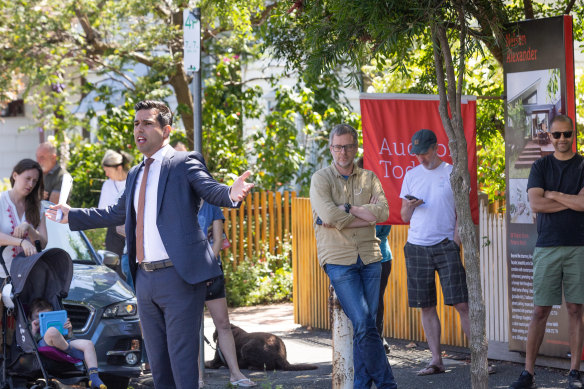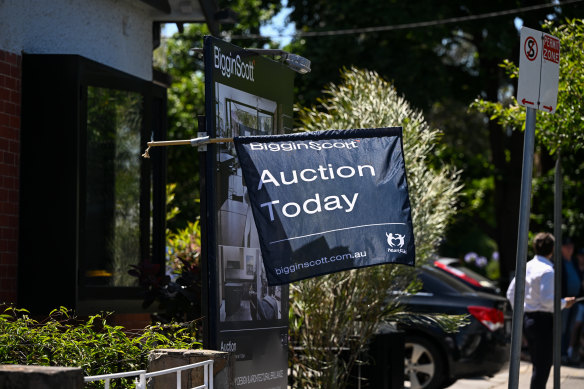Key points
- Outer suburbs have the highest rate of mortgage delinquencies.
- Homeowners in those suburbs have smaller savings buffers, and rates have already exceeded stress-testing levels.
- Mortgagors are at risk of being trapped in mortgages they are unable to repay.
Property listings
About 500 Victorian households are at risk of falling behind on their mortgage with every extra Reserve Bank rate rise, as mortgage delinquencies climb in Melbourne’s low- to mid-income suburbs.
In Victoria, 0.67 per cent of home loans are more than 30 days overdue, which was likely to rise to 0.70 per cent if there is another 25 basis point rate rise, credit bureau illion said. The figure would go to 0.73 per cent after a second rate rise.
Mortgage stress has affected Melbourne’s outer suburbs, which are two to three times above the average delinquency rate, illion head of modelling Barrett Hasseldine said ahead of Tuesday’s Reserve Bank cash rate decision, when another hike is expected.
“Up north, we have areas like Broadmeadows, Dallas and Coolaroo with high delinquency rates,” he said, of between 1.6 per cent and 2.5 per cent.
“Moving across the mortgage band, we have areas like Sydenham, St Albans and Sunshine North with higher delinquency rates. So, you can visualise it as almost a mortgage band.
“The other observation is the outer southeast, that’s the opposite [side] of Melbourne out towards Doveton, Hallam and Hampton Park, all showing significant mortgage arrears.”
Homeowners on Melbourne’s fringe, in the regions and some inner-city areas were struggling to pay their mortgages. Credit:Jason South
Home borrowers have been busily refinancing to deal with rising rates, and the value of housing refinancing hit $19.1 billion in December, ABS figures showed, second only to the all-time high the previous month.
Red Maple Finance director Nariman Amalsadiwala said his western suburbs brokerage had been fielding concerned calls from clients since the rate rises began.
“Clients are worried about rates,” he said. “The general first question they ask is how many more rate rises are coming. They’re keen to see if there are any other deals available.
“A lot of refinancing is happening.”
Amalsadiwala said some homeowners were getting trapped in loans they couldn’t repay.
“Incomes haven’t really gone up, but the interest rates have doubled,” he said. “Let us say somebody bought back two years ago at a 2 per cent rate … an existing income can [be insufficient] to service the debt.”
There were also higher delinquency rates in inner city, apartment heavy suburbs – including Melbourne, South Melbourne and Docklands – of 1.3 per cent to 1.4 per cent.
Hasseldine said the number of households falling behind on mortgage repayments has been on the rise for four months.
Homeowners who bought during the COVID boom would struggle most as rates rise. Credit:Joe Armao
“From September to December we’ve seen the portion of home loans that are behind on their repayments increase every one of those months.”
He agreed low wage growth was hurting mortgagors’ ability to repay their loans.
“This puts a lot of pressure on everyone but most of all it puts pressure on households that don’t have a monthly surplus of household income,” he said.
Key populations for mortgage stress include lower- to mid-socioeconomic areas, regional areas, and younger households that borrowed or refinanced to their maximum earlier in the pandemic. They were stress tested for rate rises of 2.5 per cent to 3 per cent, which have now occurred.
Many households have exhausted their lockdown savings but high inflation likely means further rate rises which will exacerbate financial pressures, he said.
“We will see regional areas continue to feel the financial pressure of cost increases and also the effects of climate may exacerbate the pressure on regional households,” he said, adding that flood-affected regions were going to be hardest hit.
AMP Capital chief economist Dr Shane Oliver said insecure work and lower incomes meant households in more affordable areas would be worse off than those in the inner city.
“People in higher and middle income suburbs tend to be more financially secure, even if they have mortgages,” he said. “They tend to have more stable income flows and bigger savings buffers. The data would suggest the bulk of that saving occurred with higher income, older people.
“Whereas your saving buffers in the lower income suburbs have not been as significant.”
He highlighted the boom in first-home buying during the pandemic.
“The low deposit schemes enabled people to get in [to the property market] when they probably couldn’t, which is probably coming home to roost now.”
The pandemic property boom and existing socioeconomic issues in regional areas created insecure economic conditions, which made it difficult for some households to service their debt, Oliver said.
“You could argue the biggest boom over many years would be in the cities and that’s where the debt to household income ratio would be the highest,” he said. “But income levels are much lower in regional areas and job insecurity is much higher.
“They would be a bit more vulnerable.”
The Morning Edition newsletter is our guide to the day’s most important and interesting stories, analysis and insights. Sign up here.
Most Viewed in Property
Source: Read Full Article


